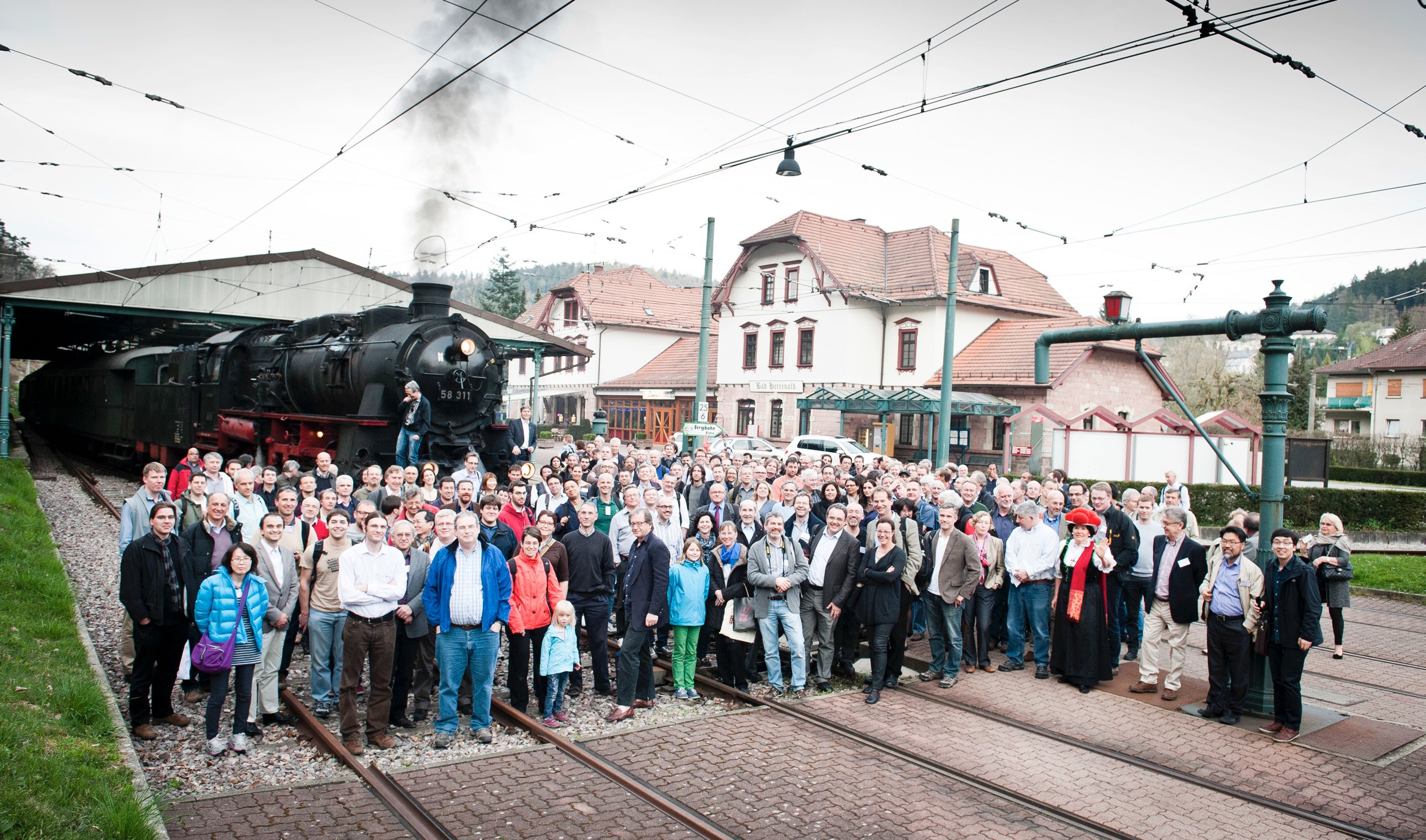
The first CMS Upgrade Week of 2014 was held at Karlsruhe in the first week of June [https://indico.cern.ch/event/294765/]. The goal of the week was to present the first draft of the Technical Proposal (TP) for the Phase 2 Upgrade of CMS. The TP, which will be submitted to the LHCC in September, will provide a description the proposed improvements to CMS for HL-LHC, along with the performance impact for these changes. A number of new and interesting results were presented, some of which are summarized here.
The tracking performance of the Phase 2 tracker in CMSSW was presented and compared with the unaged Phase 1 detector at current pileup and the Phase 1 detector after 1000 fb-1 at 140 pileup. The Phase 2 tracker restores the “current” performance of CMS and adds acceptance at high pseudorapidity with the introduction of forward tracking. Much detailed work on mechanical design, including a study of tilted sensor modules in the barrel, which could reduce material budget and cost, was presented
In calorimetry, it was decided to retain the EE-shashlik/HE-rebuild (“Shashlik” for short) and the High-Granularity Calorimeter (“HGCAL” for short) as the two designs to be presented in the Technical Proposal. The ECAL project presented concepts for the on-detector and off-detector electronics as well as ongoing studies of APD behavior under the huge neutron fluences expected at the HL-LHC. Simulations of the activation of the barrel detector before rework in LS3 were also presented, indicating that a 20 week cooldown should provide an acceptable dose rate for personnel working on the supermodules. The HCAL group presented the latest results on the rate dependence of radiation damage in plastic scintillator, which confirm the effect.
A concept for a Level-1 trigger menu with the track-trigger was presented. This initiated significant discussion, though the menu was incomplete. The large improvements in trigger performance from the L1 track trigger were quite clear in the menu and discussed in several talks.
Initial results from several POGs were presented using previously produced samples. They provided interesting initial results, primarily on signal efficiencies. Studies of fake rates and backgrounds will follow as larger samples are produced. The next important step in this process will be the Technical Proposal POG workshop May 8-9 at the LPC@Fermilab.
The draft of the TP is making significant progress, with the detector chapters starting to fill in rather completely. While there is still much work to be done, the schedule for completing the technical proposal for collaboration-wide review in August appears achievable.
Lastly, a very warm thanks to our hosts in Karlsruhe are due. The organization that the KIT team had put in place has further raised the bar for CMS meetings. A warm thanks to them!
By Jeremy Mans
- Log in to post comments

